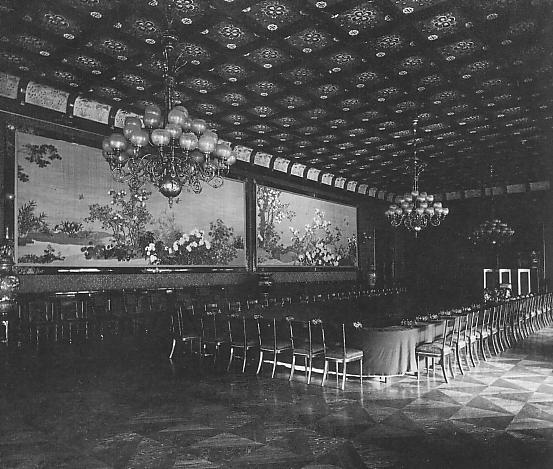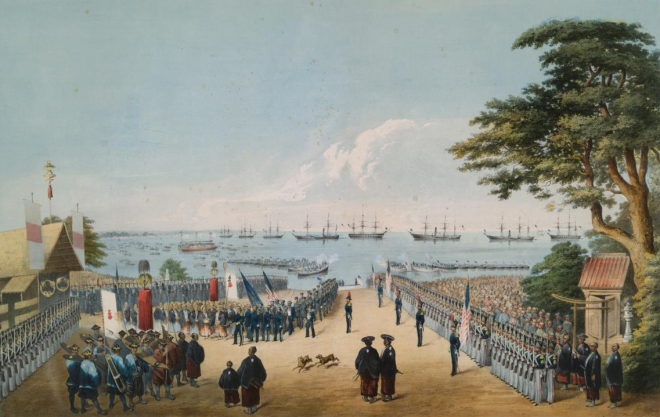
Nishida Kitaro, founder of the Kyoto School of Philosophy, was born in 1870, only two years after the Meiji Restoration.
What was being restored in 1868 was the rule of the Japanese emperor who had been but a figurehead since the establishment of the first shogunate in 1192, while actual political power had been in the hands of warlords, more often than not fighting with each other. In 1603, the Sogukawa Shogunate had negotiated an alliance of powerful shoguns, which brought a Great Peace to the Japanese population. The policy of seclusion (sakoku), imposed by the Shogunate in 1633, whereby no foreigner was allowed into Japan, and no Japanese was allowed to leave the country, had protected the land from incursions by Western traders at the height of Western expansionism from the 17th to the 19th centuries. But, as is well known, in 1853 US Commodore Matthew Perry entered the Bay of Edo (ancient name of Tokyo) with four warships, with the mission to force Japan to open to “free trade.”
Though isolation had not been water-tight during the sakoku period, Japan’s economy was still pre-industrial, and the shoguns and samurai, though professional fighters, were powerless when faced with the cannons of the US Navy. In the years which followed, treaties had to be signed granting the US and other European countries “favoured nation status,” which were resented by the Japanese as unequal and unfair.
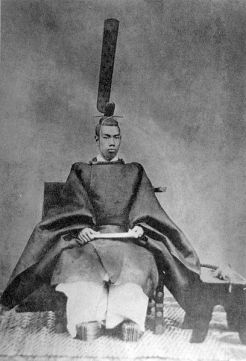
A shogunate whose power was clearly crumbling was good news for the Emperor Komei who did not miss the opportunity to reassert his imperial power. As he unfortunately died of measles in 1867, his son, only 15 at the time, ascended the throne under the name of Emperor Meiji.
So the emperor was back, but would he be able to cope with the challenges of Japan’s entry on the world stage, while his ancestors had not even been able to rule over the archipelago? Emperor Meiji’s youth turned out to be an asset as he daringly launched an ambitious programme of reforms.
In the eyes of Westerners, Japan was a “primitive” country, not unlike the many lands they had invaded in South America or Africa. Japan had a medieval feudal system, an indigenous religion based on nature spirits, no industry to speak of, and an army of samurai fighting with swords. The two century-long self-imposed isolation it had just come out of had certainly not helped!
Japan can be best understood when compared to countries such as Britain or France. Though not themselves the locus of ancient civilisations, these three countries arose in the 6th and 7th centuries CE as outposts of great civilisations, the Hellenistic and Roman civilisations on one hand, the Chinese civilisation on the other, and their growth was nourished by two major universal religions. Kingdoms issued from the Germanic invasions enhanced their legitimacy through Christian baptism (Clovis in 496, Aethelbert in 601) while in Japan the Yamato clan created a centralised state founded on Buddhism, introduced from Korea in 538. In fact, when the new Meiji emperor embarked on his programme of reforms in 1868, he found himself to be emulating the Prince Shokotu who, in the 7th century, had sent monks and scholars to China to learn everything they could about Chinese ways. And though the West has kept very quiet about it, China has been at the forefront of the advance of civilisation for most of its history. Confucius predated Greek philosophy, and the dates of the Han empire almost exactly coincided with those of the Roman empire. In 100 CE, though Rome was the largest city in the world, China’s capital Luoyang was second. In 1000 CE, the second place was still held by a Chinese city, this time Kaifeng, with Cordoba, in Spain, being first. And in 1500 and 1800, Beijing was the first largest city with two other Chinese cities among the top ten. It is only in the 19th century that China, then under the rule of a Manchu dynasty, stumbled … As for Japanese cities, in 1000 CE, Kyoto was the fifth largest city; in 1800, there were three Japanese cities in the top ten, Tokyo, Osaka and Kyoto. For comparison, note that Paris only appeared among the top ten in 1500 and London had to wait until 1800. Though urbanisation may not provide what many regard as the best lifestyle, it remains that the degree of urbanisation found in a country is a good indicator of its politic, economic, and intellectual development.
So Japan was far from being a “primitive” country in 1853. Japanese education was comparable to that of Europe. It was restricted to an elite, but then, it was the same in Europe where schools were open to a larger section of society only at the end of the 19thcentury. It has even been said that isolation had sharpened the curiosity of the intellectuals who tried to get their hands on all the bits of information available on the outside world through the Dutch, and jumped enthusiastically on opportunities to learn as soon as these emerged.
Japan’s intellectual sophistication can be seen in the way it approached the programme of reforms the Meiji government embarked on. “From the earliest times, the Japanese manner of progressing in knowledge and skill was to go to the “state of the art,” and then to adapt and improve on it.” (Robert E. Carter, The Kyoto School, 3) Sixty eight young men chosen among the brightest were sent to study at the best universities in the West. Schools and universities were built. “Catch up, overtake”: this was the slogan, the call addressed to all to rise up to the challenge. It all started with translations, tens of thousands of books on every topic. With regard to philosophy, it has been pointed out that Heidegger’s Sein und Zeit, published in 1927, was translated into Japanese before it was translated into English, and there are now five more Japanese translations of that work, while there are still only two English and two French translations. China has only one translation, but Korea has three (http://www.studia-phaenomenologica.com/introduction.php?page=introduction5).
Though this entry of the West at gunpoint was what Japan had feared, James W Heisig contends that this does not truly express the historical meaning of what happened in Edo on that fateful day. According to him, “One should think rather of a mother hen pecking at the eggshell to help the chick who has already decided it wants to break out. The Japanese had had enough.” (James Heisig, Philosophers of Nothingness, 10)
Echoing Heisig’s comment that the country was ready, enthusiastic and raring to go, Carter remarks that “The dash from feudalism to modernism was made without going through any of the intervening stages that were typical of the development of Western nations. This rapid development was both unprecedented and astonishing.” (Carter, Kyoto School, 3-4)
The country adopted a Western legal system and a constitution modeled after the German constitution with a Parliament. Schools, colleges and universities were built to educate the young as education was open to all. The government sent students to Europe and the US, and hired Westerners to teach science, mathematics, technology and foreign languages. Land reform and a radical improvement of the communication network prepared the way for the industrial revolution which would allow Japan to catch up with the West.
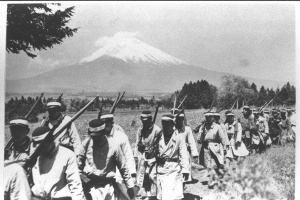
But Japan also felt that it had to protect itself from Western imperialism, and soon a new slogan was launched: “Enrich the country, strengthen the military.” This, among other things, led to a reform in education whereby schools and universities had to include military training in their curriculum. As a pupil, Nishida rebelled against this militarisation, and dropped out, preferring to study on his own. It was this policy that led Japan to become involved in the first Sino-Japanese War in 1894-95 and in the Russo-Japanese War in 1904-05. The idea was to create what was called a “line of advantage” to protect Japan’s borders. The result, however, was the creation of a large sphere of influence including Korea and Manchuria, which turned Japan into the dominant power in the Far East. And this boosted Japan’s self-confidence in its military power and, in time, led it to believe that it could compete with the West militarily as well as economically.
Japan only played a secondary role during World War I, where it fought as an ally to Britain, but this allowed it to take part at the Peace Conference at Versailles, gain recognition as one of the top five countries, and join the League of Nations.
Post-war Japan was marked by prosperity. There had been progress in democracy during the 1910s and 1920s, but in the 1930s, there was a new rise in the power of military leaders, in parallel with similar developments in Europe, which led to the implosion of the Japanese Parliament: the parties voted to dissolve themselves to be absorbed into a single party. There are echoes of these events in Nishida’s diaries, where he expressed his disapproval at the move, and anguish at what the future had in store.
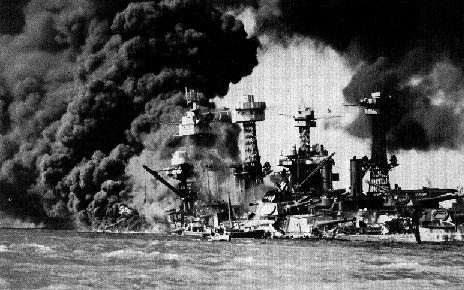
Japan launched the second Sino-Japanese War in 1937, captured several Chinese cities, and forced France to cede its colonies in Indochina. Then, after its attack on Pearl Harbour in December 1941, it invaded British and Dutch colonies – Malaysia, Singapore, Indonesia – as well as Hong Kong and the Philippines: in 1942 Japan controlled what it called the Greater East Asia Co-Prosperity Sphere. Of course, this was not going to last: the surprise effect of the Pearl Harbour attack had given Japan a temporary advantage. But the US inflicted defeat on the Japanese Navy at Midway, and from then on, the war became a matter of mass production of planes and weapons, and Japan could not compete with the US on that front. Other battles were lost, and from 1944 onwards the US launched air raids within Japan itself, destroying many of its industrial cities, including Tokyo, while cutting off food supply to cause food shortages among the population. In August 1945, the US dropped atomic bombs on Hiroshima and Nagasaki, and Japan was forced to accept unconditional surrender. This was followed by the American occupation of the country. American occupation, which Japan had worked so hard to avoid by accepting modernization in 1868, was finally brought about by the hubris which had been generated by the very power modernization had achieved.
In a sense, this was exactly what Nishida’s philosophy had been trying to avoid. Westernization had won the day, erasing the Japanese values. One may wonder how Nishida was able to focus on his complex philosophical inquiry in the midst of all that turmoil. Or was it that the rapid unfolding of events gave him a sense of urgency? We know that he saw himself invested with a mission far more important in the long term than the power trips of the politicians, that of recreating philosophy itself from the standpoint of nothingness.
